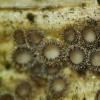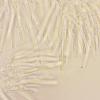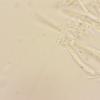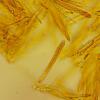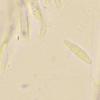
12-01-2026 22:02
Ethan CrensonHello all, I am hoping someone will have some ins

11-01-2026 20:35
Hello.A very tiny pyrenomycete sprouting sparsely

13-01-2026 18:55
Rees CronceStrossmayeria sp. on indet. decroticate hardwoodTh

13-01-2026 07:57
 Danny Newman
Danny Newman
cf. Bombardia on indet. decorticate woodAppalachia

13-01-2026 10:13
 Danny Newman
Danny Newman
Cordieritidaceae sp. on indet. wood w/ Hypoxylon s

13-01-2026 07:28
 Danny Newman
Danny Newman
Chlorociboria glauca on indet. decorticate logThe

13-01-2026 07:14
 Danny Newman
Danny Newman
Neodasyscypha cerina on indet decorticate logThe S

13-01-2026 09:10
 Danny Newman
Danny Newman
Dasyscyphella chrysotexta on indet. decorticate ha

13-01-2026 08:43
 Danny Newman
Danny Newman
Tricladium varicosporioides on indet. decorticate

13-01-2026 08:49
 Danny Newman
Danny Newman
Coccomyces sp. on fallen Rhododendron leavesPretty
Trichopezizella rubroguttata maybe?
Maria Plekkenpol,
30-04-2023 20:03
 Hello (again :) ),
Hello (again :) ),On old stem of Urtica I saw these asco's. Brown hairs with whitish material (at first thought of parasitic fungi). Hymenium whitish, apothecia small: max 0,5 mm.
Asci 8 spored, clavate (but very narrowly so), croziers + , J +. 42-46 x 4,2-5.
Paraphyses exceeding the asci, lanceolate. Spores fusoid, septated when mature, 9-13,2 x 2-2,5.
Considering that it's not growing on wood, not growing on Polygonatum, having asci with croziers and the spore size: could it be T. rubroguttata?
(Must say that to my surprise this species is not known in the Netherlands?)
Thank you (again :) )!
Hans-Otto Baral,
30-04-2023 20:49

Re : Trichopezizella rubroguttata maybe?
Hello
a closeup of the hairs would be good, but in any case I see that the hairs near the base are undulating, very typical of Lasiobelonium. On dicots occurs L. nazarovae, for which I used for a long time the possibly wrong name L. lanceolatum. Maybe this genus is not easy and the limits to the wood-inhabiting L. variegatum are not clear-cut. There exist also collections on grasses.
Maria Plekkenpol,
30-04-2023 21:51

Re : Trichopezizella rubroguttata maybe?
Thanks for your answer Zotto, I will then keep it open!
Alas :), but that's what it is! Learned a lot again anyway!
Kind regards, Maria
Alas :), but that's what it is! Learned a lot again anyway!
Kind regards, Maria
